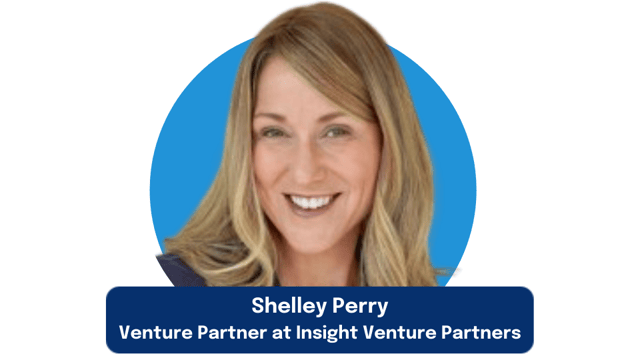Hiring a Chief Product Officer is Product Management

Shelley Perry, Venture Partner at Insight Venture Partners, discusses when and how to hire a Chief Product Officer and what it takes to scale from growth stage to IPO.
It’s become more common for product leaders to have a seat in the C-suite. However, the role of the Chief Product Officer is still commonly misunderstood, and best practices for hiring a Chief Product Officer are far from established.
I was thrilled to interview Shelley Perry, Venture Partner at Insight Venture Partners and former CTO of Industry SaaS Solutions at Hewlett-Packard, about this emerging role.
As a Venture Partner at a leading venture capital firm, Shelley evaluates investment opportunities and helps the growth stage startups that Insight has invested in achieving their next milestones. This often entails helping those companies hire a Chief Product Officer.
When Shelley begins due diligence for a prospective client, she stresses the need to understand what the thesis is behind the investment.
Where do you want to take it? Where is it now? Are you trying to grow it regionally? Are you trying to go from small mid-market to an enterprise? There's some driving factor for the investment thesis of what's going to scale. Always need to understand that before you go in.
As a startup grows, the CEO role evolves and it becomes more important to define a product leadership role, Shelley says. She has found that there are three common situations that can present challenges for growing companies:
- Building a second product
- Expanding from one geography to another
- Merging with another company
A Chief Product Officer can help companies navigate these situations effectively. Shelley defines the role as balancing economics with delivery. The Chief Product Officer needs to have the ability to understand the economics and tradeoffs of major product decisions:
A Chief Product Officer's role is to balance the commercial aspect with the delivery associated with it. I do a lot of interviewing and a lot of vetting of candidates for our portfolio companies, and I think one of the main differences between a Chief Product Officer and a SVP or VP of Product is the ability to understand the economics of the product [and] impact to the company and understand the trade-offs that need to be made in those economics.
Shelley recommends a creating scorecard of the top five things that the Chief Product Officer needs to accomplish within the first 24-36 months of starting. She also emphasizes the importance of considering cultural fit because making change is often an important part of the role.
Early in a company or product's life cycle, there's so much opportunity. You can build almost anything and it's going to be successful. As a product starts to mature, [or a] portfolio starts to mature, the analytics and the data and the analysis associated with those next things that are going to really drive that next set of growth is a different level of skill and experience. And that's really the time when you start to need to bring in someone with that experience.
You’ll learn a lot from this episode about scaling a startup, hiring, and the role of a Chief Product Officer.
Here are the highlights:
- What Shelley looks for in a product team when conducting due diligence (4:18)
- Shelley shares the most common challenges that growth-stage startups face (6:22)
- How product teams evolve while growing from early-stage startup to growth stage company (11:54)
- What a Chief Product Officer does and how you can tell if you need one (14:48)
- Shelley shares her approach to hiring a Chief Product Officer (21:06)
- What product leaders need to do to grow from growth stage to IPO (24:09)

Subscribe now!
Get our new reports, case studies, podcasts, articles and events
